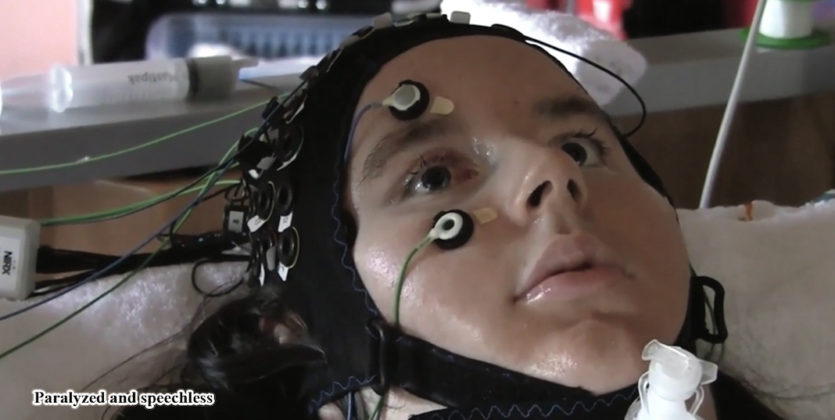Mega Doctor News –
By Emily Mullin,
In 1995, Jean-Dominique Bauby suffered a massive stroke that left him paralyzed and speechless, with only the ability to blink his left eyelid. Using just that eye, he silently dictated his memoir, The Diving Bell and the Butterfly, later adapted into a film.
Now researchers in Europe say they’ve found out the answer after using a brain-computer interface to communicate with four people completely locked in after losing all voluntary movement due to Lou Gehrig’s disease, or amyotrophic lateral sclerosis.
In response to the statement “I love to live” three of the four replied yes. They also said yes when asked “Are you happy?” The fourth patient, a 23-year-old woman, wasn’t asked open-ended questions because her parents feared she was in a fragile emotional state.
Designed by neuroscientist Niels Birbaumer, now at the Wyss Center for Bio and Neuroengineering in Geneva, the brain-computer interface fits on a person’s head like a swimming cap and measures changes in electrical waves emanating from the brain and also blood flow using a technique known as near-infrared spectroscopy.
To verify the four could communicate, Birbaumer’s team asked patients, over the course of about 10 days of testing, to respond yes or no to statements such as “You were born in Berlin” or “Paris is the capital of Germany” by modulating their thoughts and altering the blood-flow pattern. The answers relayed through the system were consistent about 70 percent of the time, substantially better than chance.
Birbaumer says “the relief was enormous” for family members who were able to communicate with their loved ones after as many as four years of total silence, and to learn they wished to remain alive on ventilators. They detail their experiments in a study appearing in the journal PLOS Biology.
In 2010, British neuroscientist Adrian Owen first reported that changes in blood flow in certain parts of the brain showed that a patient previously written off as being in a vegetative state was actually conscious.
No one has a clear idea of how many locked-in patients there are, says Jane Huggins, who runs the Direct Brain Interface Laboratory at the University of Michigan, although an estimate by Dutch researchers puts it at less than one in 150,000 in that country.
Some may be misdiagnosed as being comatose because they lack eye movement or it’s so subtle. Birbaumer and his team say their system could be used as a diagnostic to determine who actually remains conscious and aware, and he hopes to develop a technology to allow people with complete locked-in syndrome to select letters so they can communicate beyond answering yes-or-no questions. MDN












